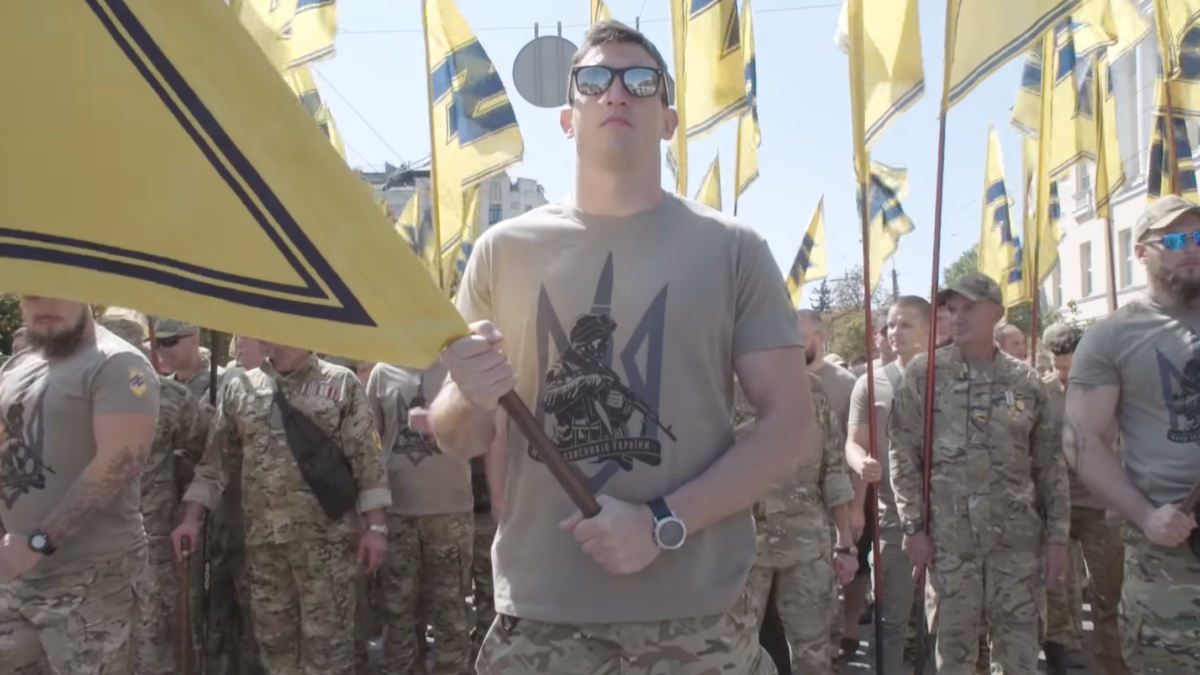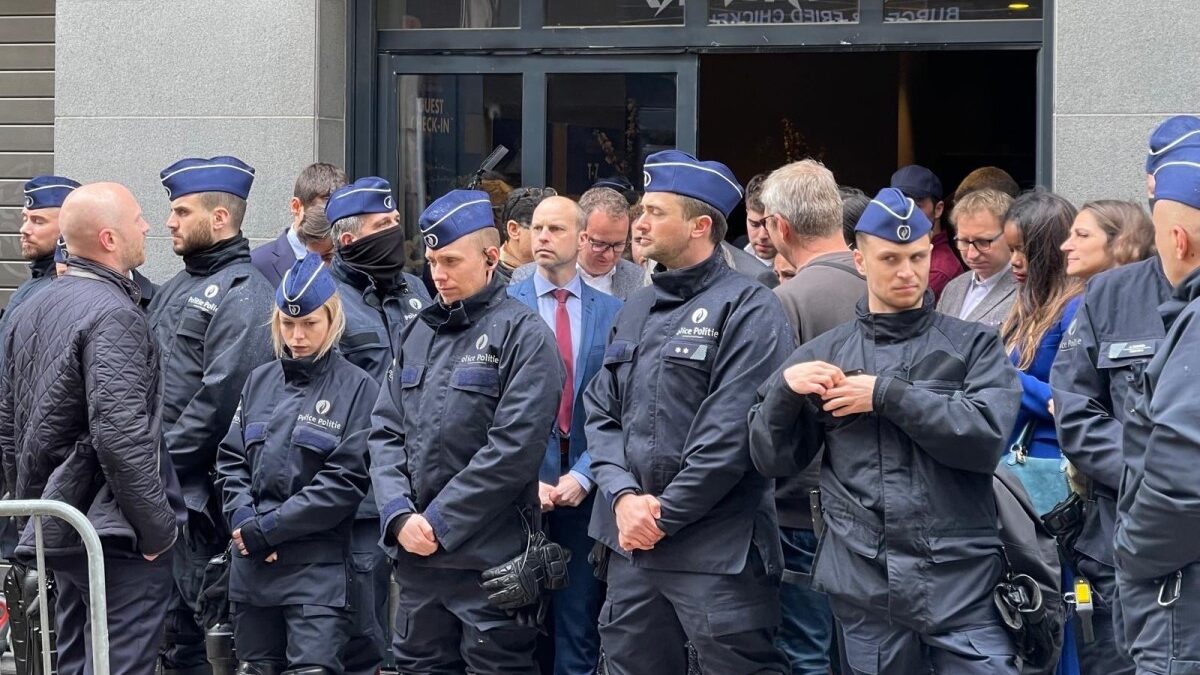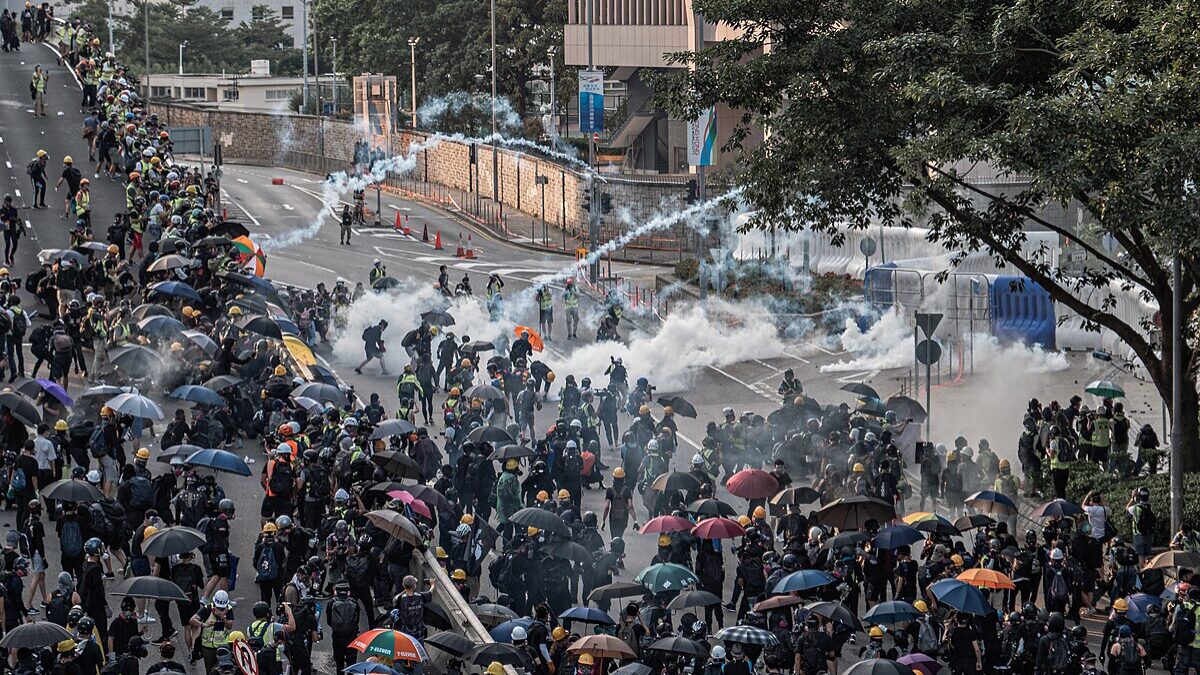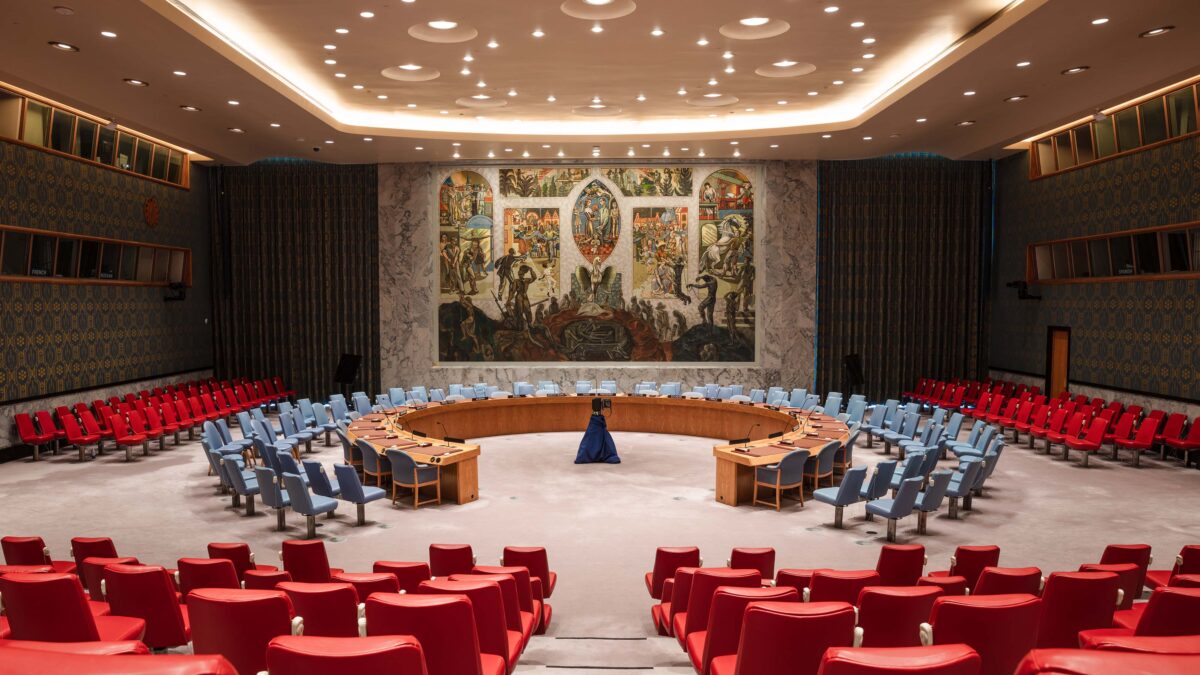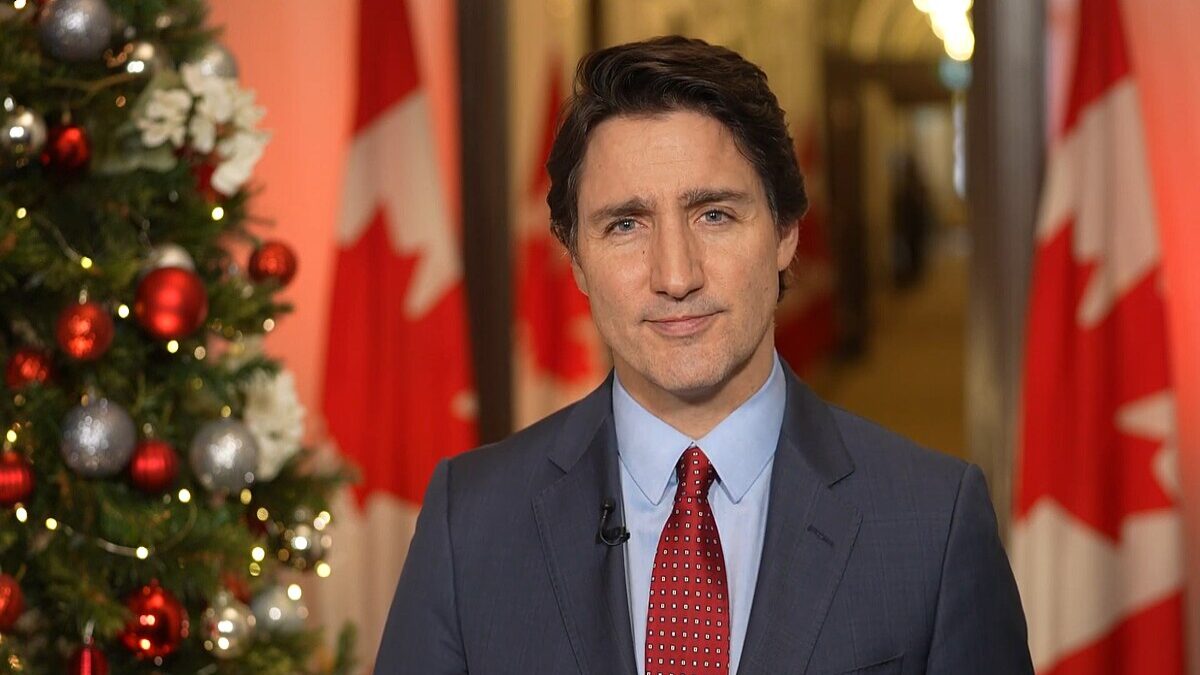Russian President Vladimir Putin has proffered, as one of his rationales for invading Ukraine, the need to “de-Nazify” the nation. Russian propaganda, some people sympathetic to it, and others perhaps well-meaning, points to the Azov Battalion in Ukraine as proof of that nation’s Nazi leanings.
To preface this discussion, it’s important to put into context what Putin means by de-Nazification. Both the Nazis under Hitler and the Soviet Union, especially in the early years under Lenin, emphasized national identity.
Because the Soviet Union sought to be a global communist empire, it anticipated a host of Soviet Socialist Republics (SSRs) for everybody: Russia, Ukraine, Kazakhstan, and even Germany, Hungary, and the rest of Europe. Under this construct, the SSRs would be united in their international communist ideology, but unique in their national identity. In this, Lenin and later generations of Kremlin leaders, rightly surmised that the larger an empire is, the more leeway it must grant its provinces, at the risk of fomenting rebellion.
It was in this early time of the U.S.S.R.’s history that Ukraine saw a resurgence of its language, literature, and national identity after decades of Russification under the Tsars.
Thus, when Putin speaks of de-Nazification, what he really means is to Russify — to return to the age of the Tsars circa the 1860s, when Russia imposed a 40-year ban on the publication of books and newspapers in Ukrainian.
About Those Neo-Nazis
Putin’s insular view of what it means to be de-Nazified aside, there appear to be some actual armed neo-Nazis in Ukraine in the form of the Azov Battalion. What is the Azov Battalion and how did it come into being? Just as importantly, is it uniquely Ukrainian, or are there similar groups elsewhere?
In late 2013, as Ukraine’s fourth president, the pro-Russian Viktor Yanukovych, approached his fourth year of a five-year term, political unrest — known as the Euromaidan protests — grew out of a public desire for closer integration with the European Union rather than Russia. By February 2014, Yanukovych had fled to Russia while Russia was invading Crimea and sending Russian officers to the Donbas Basin provinces of Donetsk and Luhansk, in Ukraine’s east.
In the chaos of 2014, the Ukrainian military, which had been left in disrepair and hobbled by corruption and cronyism, was wholly inadequate to the task of defending the nation. Crimea fell almost without a shot, while Donetsk and Luhansk were rapidly brought under de facto Russian control. Mariupol, the second-largest city in Donetsk with some 430,000 residents, was abandoned under pressure by Ukrainian government forces in May 2014.
But five weeks later, government forces, including the Azov Battalion, retook the city. Three months later, the Russian-backed separatists of the Donetsk People’s Republic tried again to take Mariupol, and again, the Azov Battalion played a leading role in keeping the city under Ukrainian control.
At the time, the Azov Battalion’s insignia and the ideology of its leadership and rank-and-file wer openly neo-Nazi. The unit was also accused of war crimes, including using torture on their Russian-backed enemy. When confronted with the similarity between the Azov Battalion’s unit patch and that of the German Nazi 2nd SS Panzer Division, Azov officials denied the connection, claiming that their symbol is an abbreviation for the slogan “National Idea.” (In Ukrainian, the letters “H” and “I” are tilted to the right by 45 degrees.)
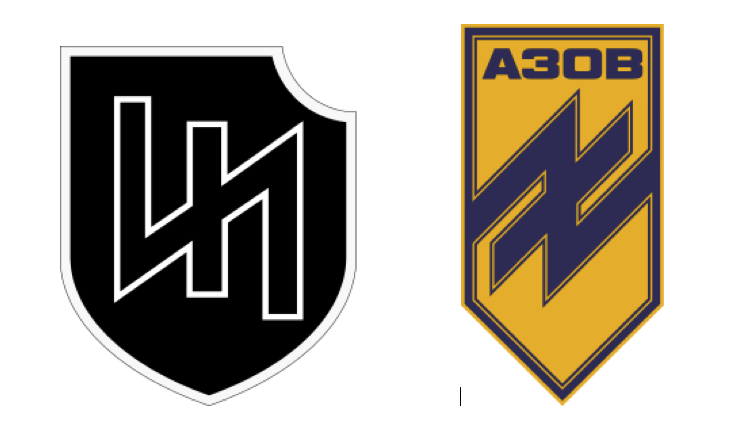
Chris Joyner, writing for the Atlanta Journal-Constitution on March 4, quoted Prof. David Malet, an expert on transnational fighters with the School of Public Affairs at American University, who noted that as the Ukrainian military gained proficiency, it sought to tame the Azov Battalion and discourage foreign extremists from volunteering in Ukraine. Malet told Joyner, “A lot of Russian propaganda has focused on Nazi ties, trying to paint all the volunteers in Ukraine as Nazis, when again it’s probably been a pretty good mix of it on both sides.”
Of course, Ukrainian President Volodymyr Zelenskyy is Jewish, as was the nation’s previous prime minister, Volodymyr Groysman. This led Hans Jakob-Schindler, senior director of the Counter Extremism Project, to sarcastically note of Putin’s claims of Ukraine as a Nazi state was, “apparently, a very new kind of Nazi that only a Russian understands how that works.”
Reinforcing Groysman’s view, the 450-member Ukrainian parliament, or Rada, only has one member from a party accused of neo-Nazi leanings. Svoboda, founded in 1991 at the dissolution of the Soviet Union, recruited skinheads and employed neo-Nazi symbols in the 1990s, only to later moderate. It reached its apex in the 2012 election, winning 10 percent of the vote and 37 seats. In the 2019 election, Svoboda received only 2 percent of the vote.
Returning to Malet, his contention that there’s a “good mix” of neo-Nazi-like groups in both Ukraine and Russia is important for context.
Putin has his own ultra-nationalist groups. For instance, in 2014, a Russian motorcycle gang with close Putin ties known as the “Night Wolves,” was used as the vanguard of the Crimea invasion — inaugurating a new era of so-called “hybrid warfare.” By streaming into Crimea, the Night Wolves showed that the Ukrainian central government was powerless. The gang’s ideology is based on contempt for a decadent and rootless West with its leader Alexander Zaldostanov admitting that “death to faggots” might be an appropriate motto.
The Rise of Neo-Paganism
In some sense, the rise of nationalism has paced the rise of globalism and the subsequent disorienting displacements of work and dilution of culture. One reaction to this can be seen in the concurrent rise of neo-paganism.
When I enlisted in the U.S. Army in 1983, I never saw pagan symbology. By the time I retired as a lieutenant colonel in the Army National Guard in 2007, it was noticeable, but not yet widespread. Interestingly, when I toured Folsom Prison in 2006 while a member of the California State Assembly, the prison chaplain told us the two fastest-growing faiths behind bars were Islam and Wicca, the latter being a revival of paganism.
There is a certain logic in this. Christianity is a global faith, making no distinction between people. Further, Christianity teaches forgiveness, to love one’s enemy, and to turn the other cheek. In the context of the profession of arms — or the dangerous reality of being incarcerated — Christianity may be seen by some as weak, whereas paganism can appeal to a warrior ethos.
Insofar as Ukraine and Putin’s Nazi accusations against the nation, the question is whether actual Nazis with real animus towards the Jewish people and other minorities can gain a foothold and use their power to persecute people. This prospect appears vanishingly small, and, if Ukraine survives as an independent nation, even less so.
